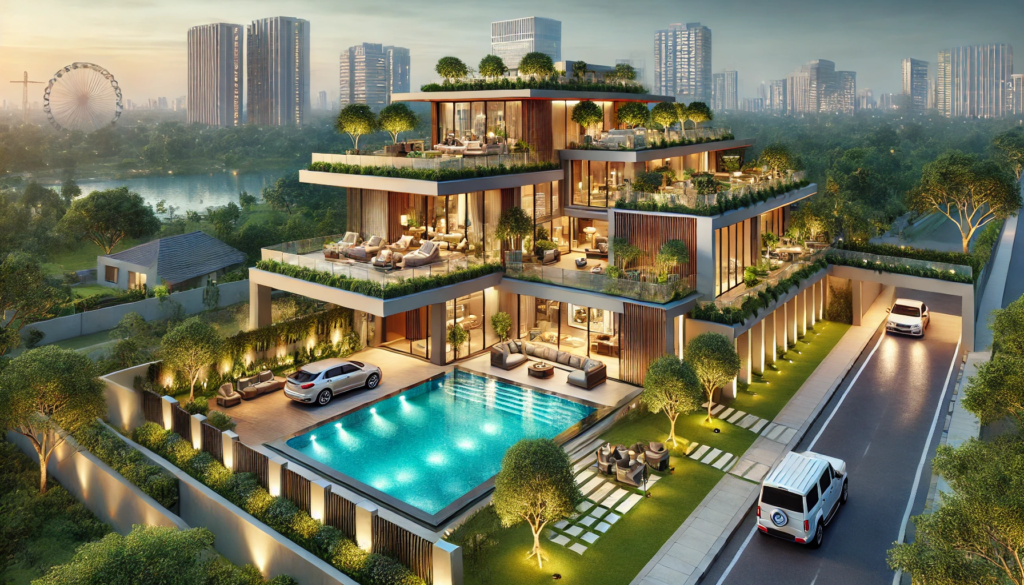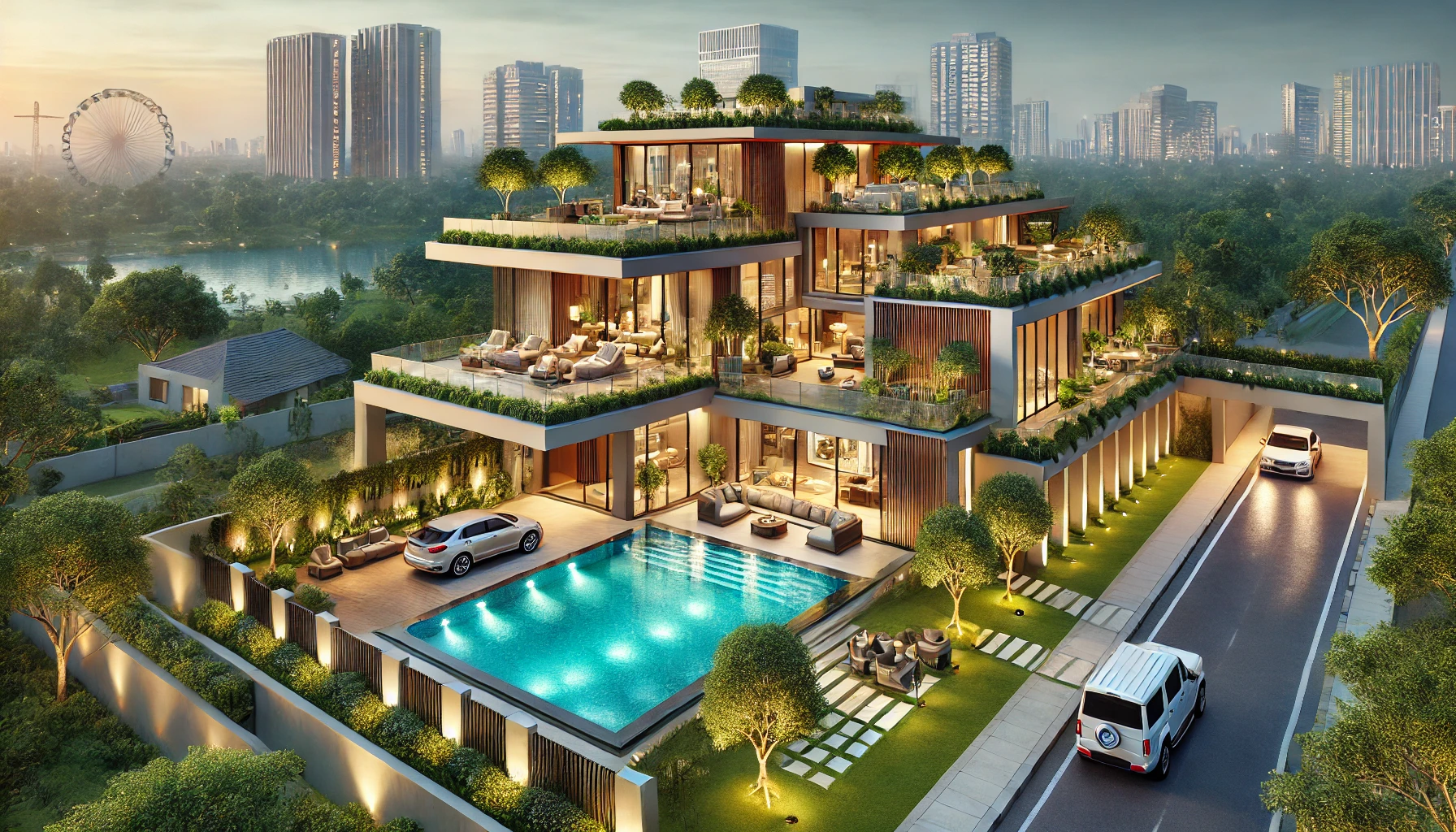India’s real estate market has been experiencing a dynamic transformation, with the luxury housing segment emerging as a standout performer. This growth can be attributed to evolving buyer preferences, increased disposable incomes, and the growing prominence of urban lifestyles. Here, we delve into the latest trends shaping the luxury housing market in India in 2025.
1. Surge in Demand for Ultra-Luxury Residences
The demand for high-end homes priced above ₹4 crore has witnessed a remarkable surge. Cities like Mumbai, Delhi-NCR, Bengaluru, and Hyderabad have become hotspots for luxury housing, with buyers seeking exclusive amenities and prime locations. According to market data, sales of ultra-luxury properties grew by nearly 38% year-on-year in 2024, highlighting a robust appetite for premium living spaces.
Drivers:
- Affluent Buyers: High-net-worth individuals (HNWIs) and non-resident Indians (NRIs) are driving the demand for luxury housing.
- Post-Pandemic Lifestyle Shifts: The pandemic emphasized the importance of spacious homes with high-quality amenities, leading to a shift in preferences towards larger, more luxurious properties.
- Growing Urbanization: Expanding urban centers and improving infrastructure are bolstering the appeal of luxury housing in metropolitan areas.
2. Integration of Smart Home Technologies
Technology is redefining luxury living, with smart home features becoming a staple in high-end properties. Automated lighting, climate control, voice-activated assistants, and advanced security systems are now integral to luxury housing projects. These innovations not only enhance convenience but also appeal to tech-savvy buyers seeking futuristic homes.
3. Sustainability and Green Living
Eco-consciousness is gaining traction among luxury homebuyers. Developers are incorporating sustainable practices, such as using eco-friendly construction materials, integrating renewable energy sources, and designing homes with ample green spaces. Green building certifications, such as LEED and IGBC, have become a significant selling point in the luxury segment.
4. Prime Locations and Exclusive Amenities
The location of luxury properties continues to play a crucial role in buyer decisions. Gated communities in prestigious neighborhoods and high-rise apartments offering panoramic city views are in high demand. Exclusive amenities such as private pools, concierge services, rooftop gardens, and wellness centers further enhance the allure of these properties.

5. Increased Interest from NRIs
NRIs have emerged as key players in India’s luxury housing market. Favorable exchange rates, improved connectivity, and a desire to invest in their home country have spurred this trend. Cities like Bengaluru and Pune, known for their cosmopolitan culture, have particularly attracted NRI investments.
6. Shift Towards Branded Residences
Branded residences, often developed in partnership with global luxury brands, are gaining popularity. These projects offer not only premium living spaces but also a distinct lifestyle associated with the brand’s legacy. Collaborations with names like Armani, Trump, and Ritz-Carlton have added a new dimension to the luxury housing segment in India.
7. Rise of Wellness-Oriented Homes
Wellness-focused homes have become a priority for luxury buyers post-pandemic. Developers are emphasizing features such as:
- Air purification systems
- Noise reduction technology
- Home gyms and yoga spaces
- Wellness spas These attributes cater to the growing demand for homes that support physical and mental well-being.
Challenges and Opportunities
While the luxury housing market in India is thriving, challenges such as high input costs, regulatory hurdles, and limited land availability in prime locations persist. However, innovative construction technologies, government initiatives like RERA, and evolving consumer preferences present opportunities for growth and innovation.
Outlook for 2025
The luxury housing market in India is set to grow further, driven by economic resilience, rising urbanization, and an increasing number of affluent individuals. As developers continue to innovate and adapt to changing buyer expectations, the sector’s trajectory remains promising.
In conclusion, the luxury housing market in India reflects the aspirations of a modern, affluent demographic seeking exclusivity, sustainability, and innovation. With its steady growth and evolving trends, this segment is poised to redefine the contours of Indian real estate in the years to come.
Article References:





Join The Discussion